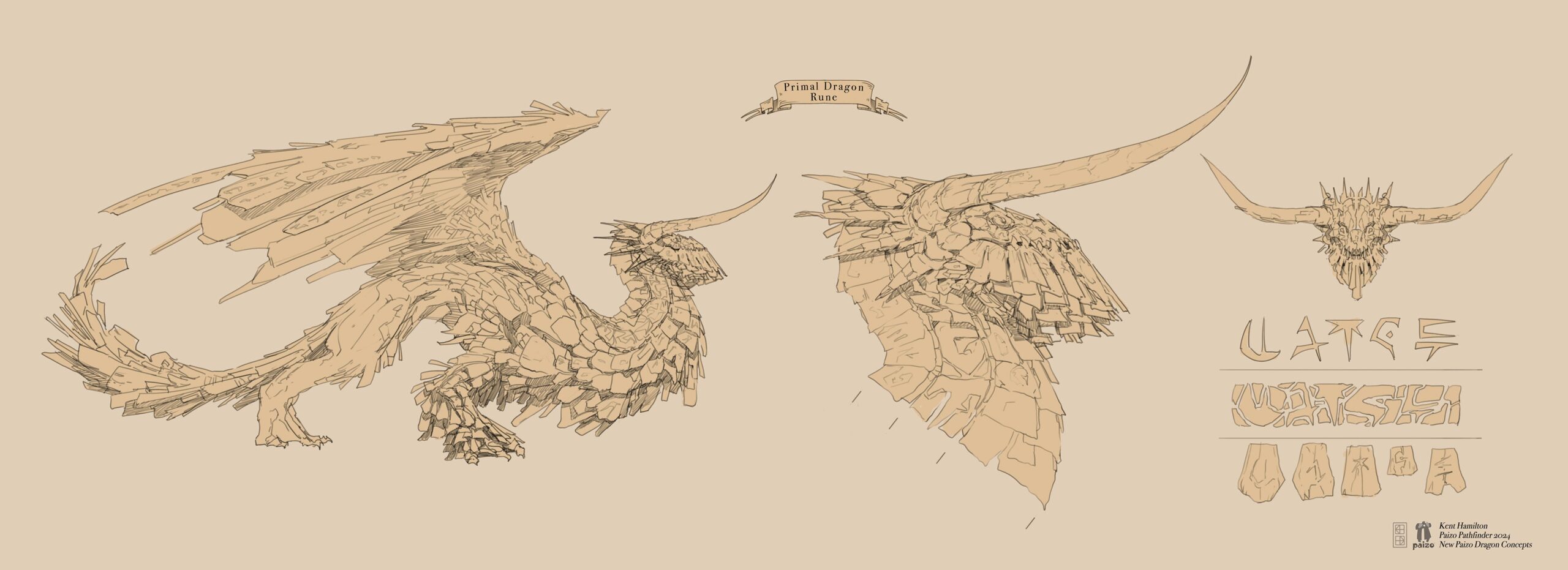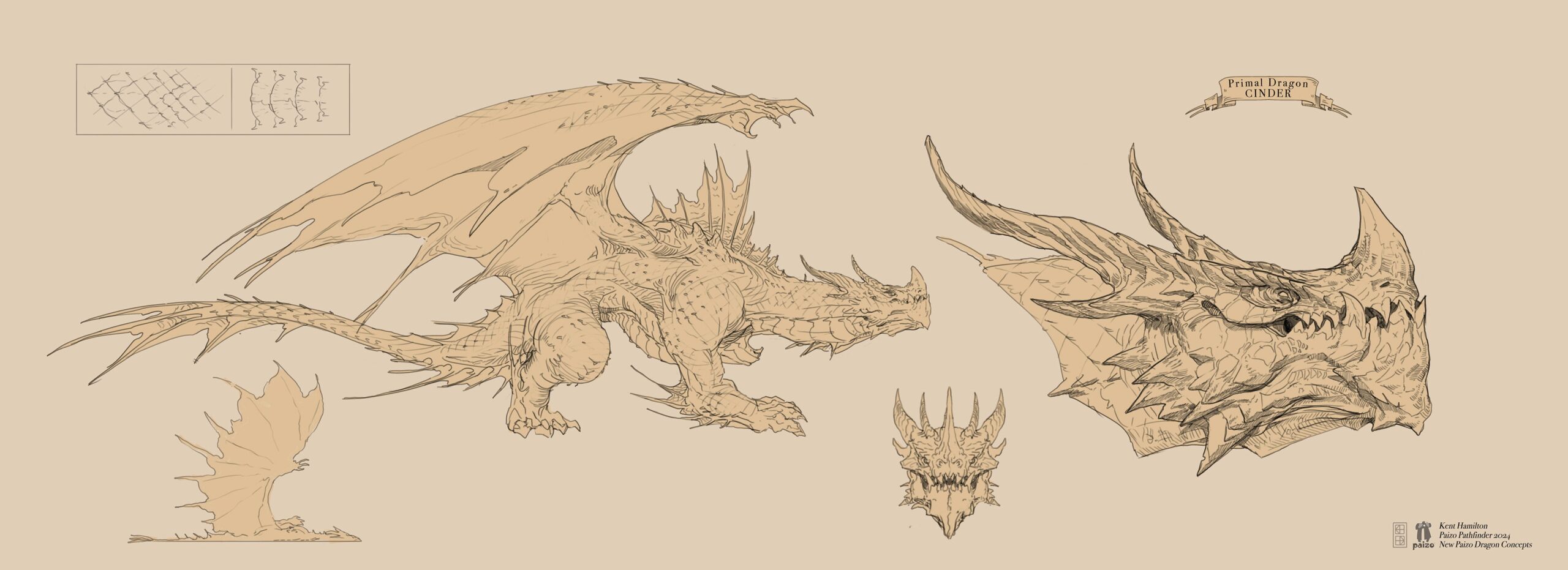Hello, hello! Luis Loza here! You might have heard that we will be unleashing a massive flight of brand-new dragons with the upcoming releases of Pathfinder Monster Core 2 and Pathfinder Lost Omens Draconic Codex. While I love previewing new dragons and showing them off one by one like an excited grandfather sharing the mass of pictures in his wallet, I won’t be able to do that this time around. Unfortunately, we have too many new dragons! With that in mind, the plan is still to preview a few dragons over the coming weeks and even give some behind-the-scenes insight by sharing the concept art by our very own incredible concept artist, Kent Hamilton.
Our first preview focuses on some of the dragons found in Pathfinder Monster Core 2. As some of you may know, our dragons are broken into one of four classifications based on the four magical traditions. This time, I’m going to showcase a new arcane and a new primal dragon.
This big fella is a rune dragon, an arcane dragon with the power to create and manipulate runes. Runes are an important part of magic in Pathfinder, and these dragons have an innate control over these powerful symbols. A rune dragon’s scales are thick and feature natural runes, as well as runes the dragon inscribes themself. These scales are effectively runestones and would-be dragon slayers can use these scales to transfer runes to their equipment like they would any other runestone.
A rune dragon can shift the power of the runes on their scale, attuning the runes to a particular energy to grant the dragon an immunity to the likes of acid, cold, electricity, fire, or sonic damage. In addition to claws and sharp fangs, a rune dragon creates runes during combat. They can create an explosive rune and place it on a creature, later detonating it for a blast of the same type of damage attuned to their body. Instead of a typical breath, a rune dragon’s breath places several runes on creatures in a cone and immediately detonates them. As they grow in age and power, a rune dragon gains the ability to create other runes with different effects.
Pathfinder Monster Core 2 also features the phase dragon, an arcane dragon with power over teleportation magic that can blink around the battlefield and teleport their foes away.
The other dragon we’re looking at today is the cinder dragon, a primal dragon with a focus on fire. The cinder dragon fills the roles of older dragons that were known for being red. Like their legacy counterparts, cinder dragons are all about fire, but we decided to turn that knob up to 11 this time around. Their pyre breath not only deals fire damage, but can also set creatures on fire and fills the area with obscuring smoke. If a nearby creature is on fire, the cinder dragon can stoke the flames and cause them to burn intensely for a moment, causing the creature to take their persistent fire damage once more.
As they grow in power, cinder dragons have greater control over fire. Ancient cinder dragons are capable of cursing a creature to transform all of the damage they would cause into fire damage. This is an indiscriminate curse, turning the damage from a fighter’s sword or a sorcerer’s ice spell into fire alike. It turns out that while it might look cool, dealing nothing but fire damage isn’t particularly helpful against a cinder dragon!
The other found primal dragon in Pathfinder Monster Core 2 is the coral dragon, aquatic dragons that live around coral reefs. A coral dragon can unleash blasts of water and even meld into their bonded reef to travel great distances.
That’s all the dragons we can share for now. Senior Developer Eleanor Ferron and I will continue to share more in the coming weeks, and I hope all you fans of dragons look forward to more previews. See you then!
Luis Loza (he/him)
Creative Director (Rules & Lore)
Read more at this site


